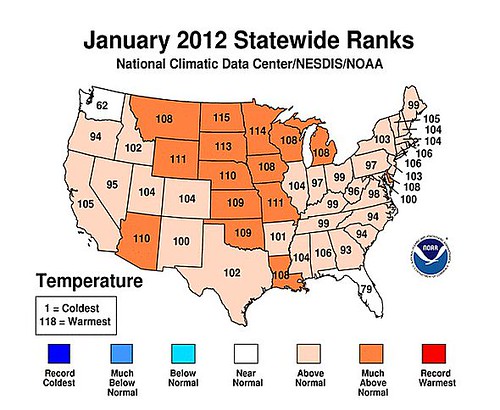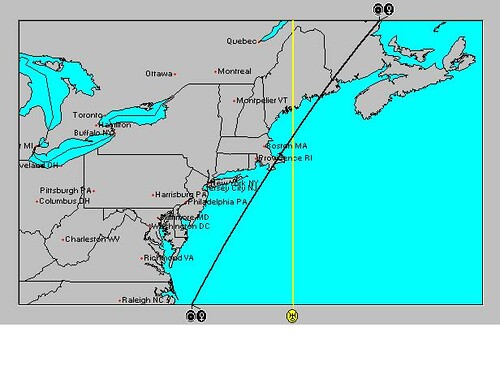Based on my January 24, 2011 post entitled
The Winters of 2011-14, I wrote an article for
The Mountain Astrologer magazine. It carried the same message: colder winters for 2011-14. In the article, I issued specific forecasts for the United States, Europe, and China. I've been posting the results of these forecasts over the last few months. As far as these individual forecasts go, I was quite pleased with their accuracy, but not as far as the overall cold I expected.
However, it seems that Europe did have a cold winter to speak of. Europe experienced a time of brutal cold more in line with what I was expecting. Accuweather posted some sad news on February 5th in its headline “Europe Cold Wave Death Toll Nears 300.” So, while my individual forecasts fared well, the overall U.S. winter forecast needs to be examined to learn where improvements can be made. Situations like this one, when all is said and done, can make future forecasts more accurate as a better understanding is gained of the astrometeorological process.
The January 27th Accuweather headline stated that “January 2012 Breaks Heat, Cold, Snow and Tornado Records.” The cold referred to in that headline was in Alaska and snowfall records were broken in 23 states. In spite of this, the overall U.S. winter was a warm winter when all was said and done. The cold weather that I forecast was based on the position of Uranus in the season's key chart and it's approaching square to Pluto. And although Uranus did in just about every instance bring wintry weather when aspected, there were other factors at work as well. It seems, in retrospect, that Mars lingering on the ascendant throughout the Plains brought a lot of the heat experienced throughout the winter there.
For example, according to the National Climate Data Center map below, the warmest states on average for the month of January were the orange colored ones.

Now, in astrometeorology, the planet Mars is the author of such warmth. By looking at its position in the Cardinal Solar Ingress for the winter season, we can see how it coincides beautifully with the heat that was experienced. The white line in the map below shows Mars' position.

The areas of the U.S. that experienced temperatures higher than the average for the month of February 2012 are shown in the Climate Prediction Center's map below. The redder the color, the higher the departure from normal.

The position of Mars in the Cardinal Solar Ingress for the winter season had changed a bit by the beginning of February and is shown in the astro-locality map below.

Notice the white line representing Mars had also moved eastward just as the higher average temperatures had moved eastward as well.
I believe this was an important overlooked key that will make other future forecasts based on astrometeorology more reliable and accurate. Now it remains to be seen if this type of information will change the outlook for the next few winters as mentioned in my original post.








